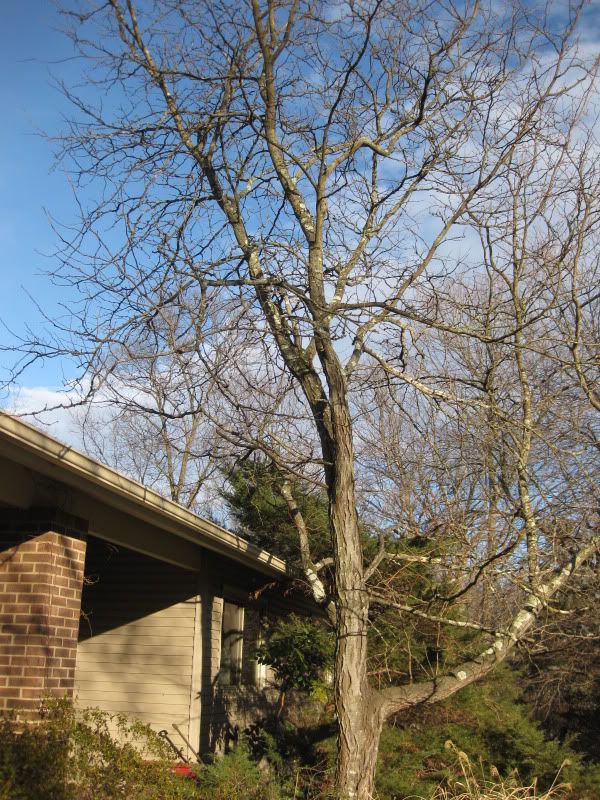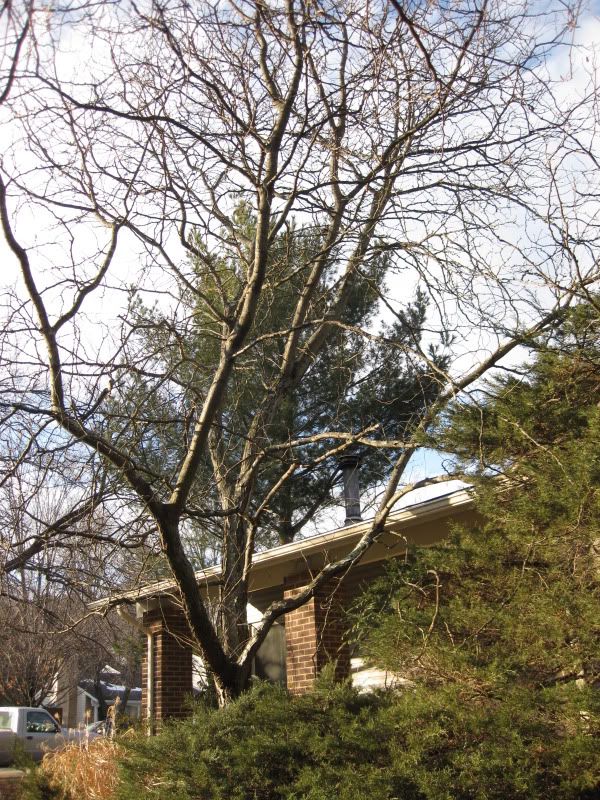Shucks. I call everything without thorns a "Shademaster".
Varieties of Honey Locust:
'Christie' (Halka™) - This sturdy-trunked form is known for its round-headed crown with less drooping branches. It will reach 40' tall and wide and rarely fruits.
'Impcole' (Imperial®) - Unusual for its relatively dwarf mature size, this 35' tall tree has a compact spreading habit. It produces few pods and has very fine-textured foliage that turns yellow in fall.
`Majestic' has nice dark-green foliage. It is seedless and podless.
'Moraine' - This selection was the earliest thornless form to be patented (in 1949) and widely introduced on the market. It is fruitless and forms a wide, spreading tree 40' tall and wider. Good pest resistance and yellow fall color ensure this plant's continued popularity.
'Shademaster' (Shademaster®) - This form is popular for its upright, symmetrical growth habit to 40' tall. It produces some pods and has good, deep green foliage. It also reportedly has very good drought tolerance.
'Skycole' (Skyline®) - A cold-hardy form with yellow fall color and few fruits, this selection is most notable for its unusual upright growth habit. It forms a broadly pyramidal tree 40' tall and wide. It makes a good street tree and is widely regarded as one of the finest forms available.
'Speczam' (Spectrum™) - Early spring bright yellow foliage is the main feature of this new form, which purportedly holds its golden hue later into the season than other gold-foliaged forms. The habit is rounded and 35' tall and wide.
'Suncole' (Sunburst®) - This a very popular tree noted for the new foliage, which emerges with a bright gold hue before fading to green. The plant reaches 35' tall and has an irregular habit with non-symmetrical branching. It is fruitless but supposedly susceptible to a canker disease. Ideally it should be used in moderation, as mass plantings of the bright yellow foliage can be unpleasant.
Varieties of Black locust:
Good description of black locust:
http://en.wikipedia.org/wiki/Black_locust
'Bessoniana' - A thornless cultivar with a compact oval form that will be 30 feet tall and 20 feet wide.
'Frisia' - This plant has become very trendy and popular in the horticultural community. It is most notable for the foliage, which emerges golden yellow. This hue is held reasonably well throughout the season, but it does dull in warm summer areas such as New England. The spines on new shoots are colored red. It is a vigorous grower that may reach 30' to 50' tall. The plant may be employed to lighten up shaded areas.
'Idaho' (parentage uncertain, perhaps a selection of Robinia x ambigua) - A tough tree that tolerates difficult cultural conditions and the cold of USDA zone 3-4, this hybrid cultivar bears rosy-pink blooms in late spring. It grows to 40' tall with a spread of perhaps 30'.
'Inermis' - A rounded tree with thornless branches. 'Lacy Lady' (Twisty Baby TM) - This 8-foot tall plant has crooked stems and curled foliage.
'Purple Robe' (also listed as a selection of Robinia x ambigua and as 'Rouge Cascade') - A rose-pink flowering form, this selection forms a compact rounded 40' tree. The new growth emerges bronzy-red and retains some undertones of this color into summer. It may form fewer seeds than the species, plus it appears to flower slightly earlier in the season.
'Pyramidalis' (also known as 'Fastigiata') - Essentially spineless, this plant forms a strongly upright plant to 50' tall and perhaps 15' wide.
'Semperflorens' - This plant is notable for producing sporadic bloom after the initial late-spring flush.
'Tortuosa' and 'Lace Lady' (Twisty Baby™) - These selections form small trees with twisted, contorted branches and stems. They are often grafted and usually do not exceed 10' in height. Flowering is sparse or non-existent. Their artistic stems may lend interest to the winter garden.
'Umbraculifera' - A unique dwarf form, this plant only reaches 20' tall with a dense, umbrella-like canopy. It produces few or no thorns, but also flowers very sparsely. It appears prone to damage from ice and borer insects.
Do NOT presume that I know all this stuff. I just do a little searching.
Without more details from better pictures, it is almost guesswork that it is even a locust, although it looks like one to me.






